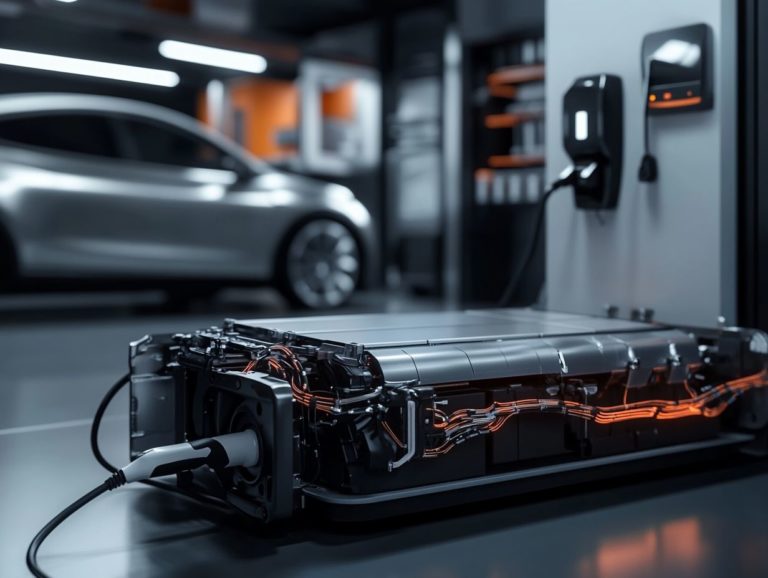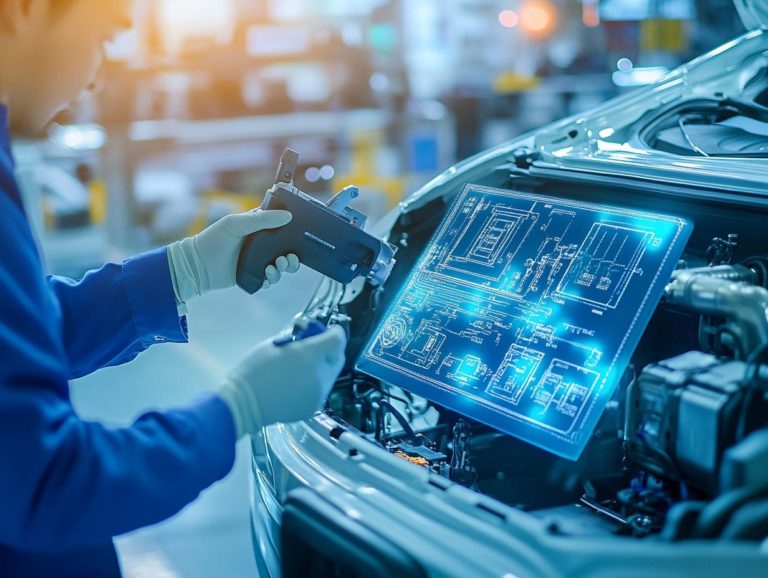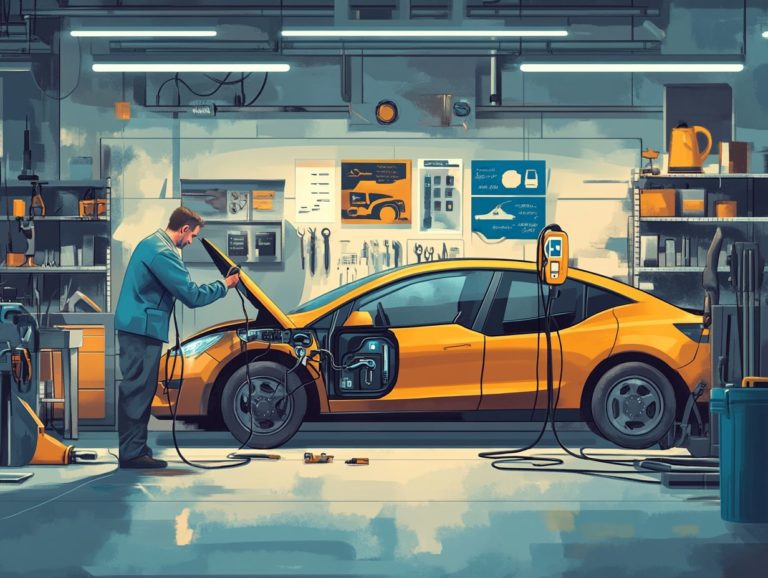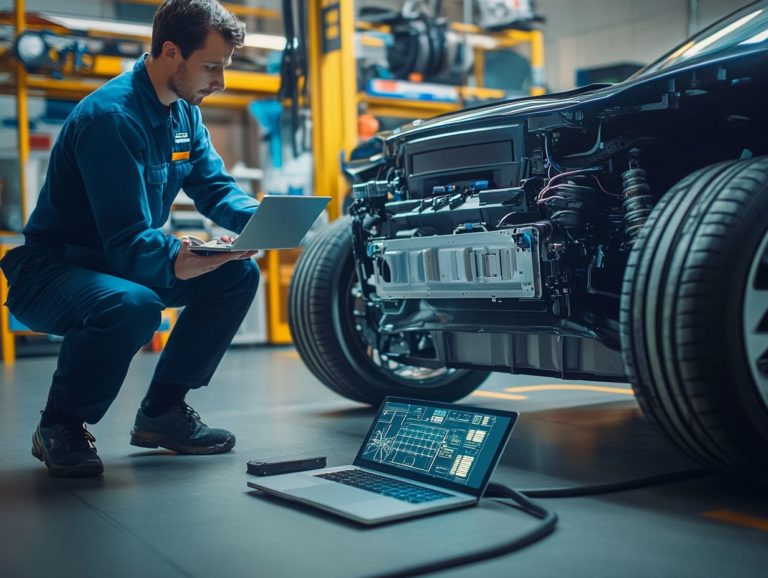Understanding EV Cooling Systems
Electric vehicles (EVs) are revolutionizing transportation, yet one critical element frequently flies under the radar: the cooling system.
This vital component is instrumental in sustaining both the performance and lifespan of EVs by effectively regulating temperature during operation.
You ll delve into the different types of cooling systems air and liquid explore their essential components, identify common issues, and consider future advancements in cooling technology.
Uncover the intricacies that ensure your electric vehicle operates at peak performance!
Contents
Key Takeaways:
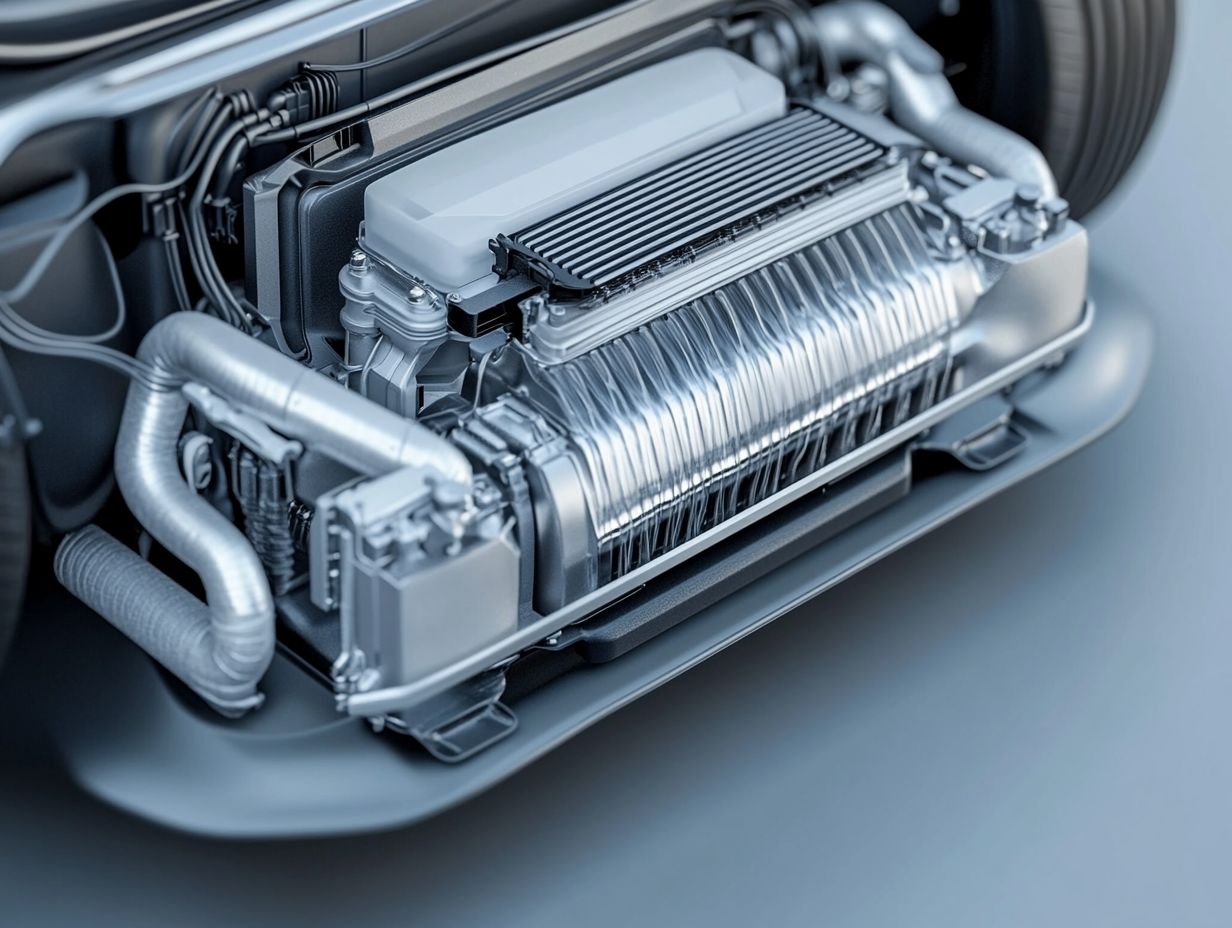
- EV cooling systems are essential for the performance and longevity of electric vehicles.
- There are two main types of cooling systems for EVs: air cooling and liquid cooling.
- Regular maintenance and prompt identification of issues are crucial for ensuring the proper functioning of EV cooling systems.
What is an EV Cooling System?
An EV cooling system is an essential element of electric vehicles, meticulously engineered to regulate the temperature of critical components, including the battery. This management is vital for ensuring optimal performance, efficiency, and safety.
As operational temperatures rise, effective temperature control becomes essential; overheating can dramatically shorten battery lifespan and compromise the vehicle’s overall durability.
Typically, the system encompasses both active cooling techniques, such as liquid cooling and heat pumps, and passive cooling components. These include devices that transfer heat from one medium to another, such as heat exchangers, to efficiently dissipate heat produced during charging and discharging cycles.
The Importance of Cooling Systems for EVs
Cooling systems play a vital role in keeping your electric vehicle (EV) running smoothly and efficiently because they significantly influence your vehicle’s performance, efficiency, and battery lifespan.
Impact on Performance and Longevity
The impact of cooling systems on battery performance and longevity in electric vehicles is significant. Temperature fluctuations can lead to inefficiencies and potential damage.
These fluctuations directly affect how well your vehicle maintains its charge and how long its battery lasts. Effective temperature management is crucial for optimizing electric vehicle (EV) performance, preventing overheating during high-demand situations, and ensuring efficient operation in colder climates.
Take Tesla, for example. They utilize a sophisticated liquid cooling system that not only keeps thermal conditions optimal but also enhances energy efficiency. This allows you to enjoy extended range and improved charging speeds.
The Nissan Leaf, for instance, relies on air cooling, which, while effective, may not deliver the same performance under extreme temperatures. This underscores the importance of selecting the right cooling method to ensure the reliability and longevity of your EV battery.
Types of Cooling Systems
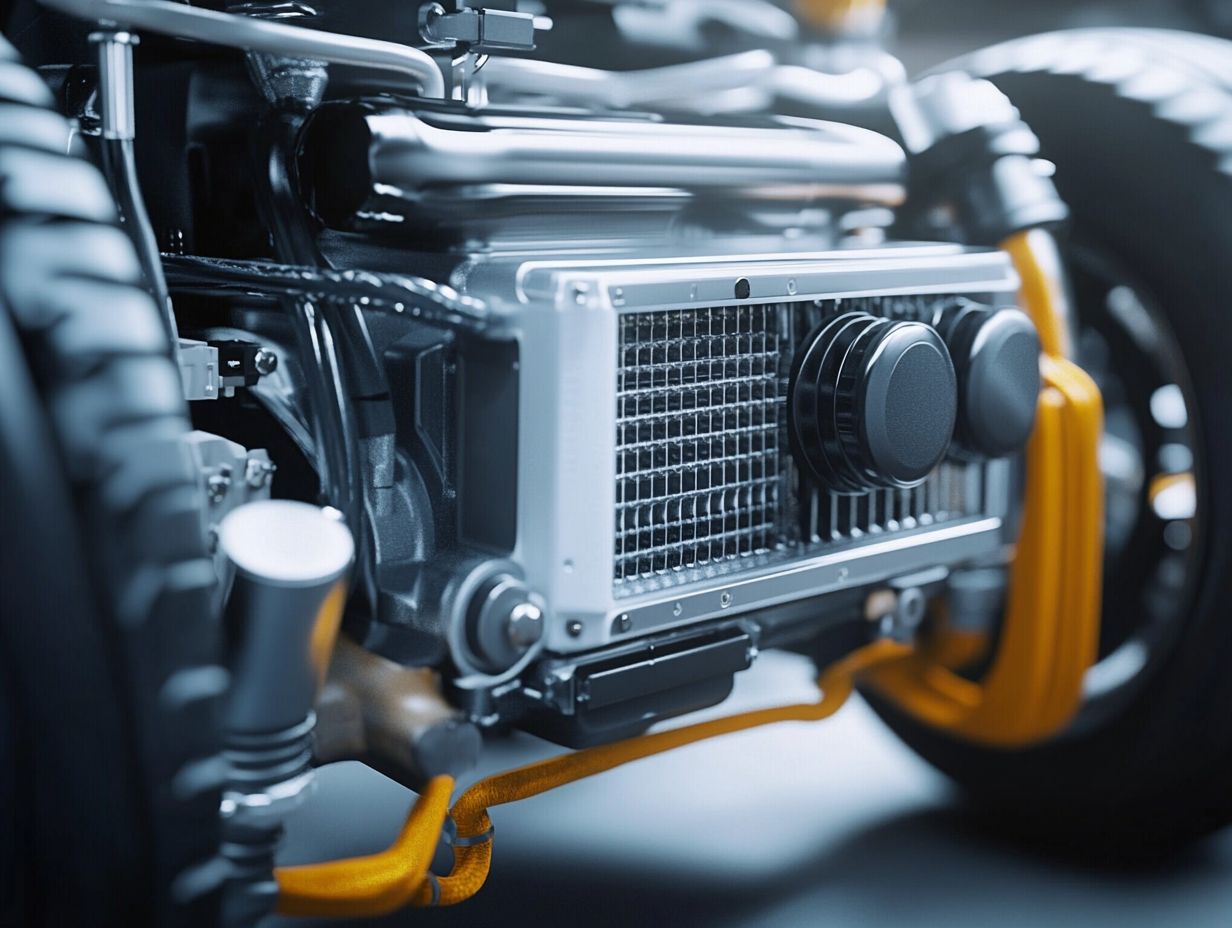
You ll find that electric vehicles primarily utilize two types of cooling systems: air cooling and liquid cooling. Each system offers distinct advantages and serves specific needs in temperature control, allowing for optimal performance and efficiency.
Air Cooling vs. Liquid Cooling
Air cooling and liquid cooling represent two distinct approaches in EV cooling systems, with liquid cooling typically taking the lead in efficiency and performance. This is primarily due to its remarkable ability to dissipate heat more effectively.
While air cooling relies on ambient air movement to manage temperatures, liquid cooling circulates a coolant through designated channels, absorbing excess heat swiftly. This dynamic enables liquid-cooled systems to handle higher thermal loads, making them particularly suited for performance-driven vehicles, such as high-end electric sports cars, where optimal thermal regulation is paramount.
On the other hand, simpler electric vehicles with lower power demands may find air cooling entirely adequate, offering a lighter and less complex solution. This distinction is evident in models like the Tesla Model S, which employs liquid cooling, while some earlier electric bike models opted for air cooling to achieve weight savings and simplify maintenance.
Choose the right cooling system now to ensure your EV can handle any challenge and stay on the road longer!
Components of an EV Cooling System
An EV cooling system comprises several essential components, including the radiator, fans, heat exchangers, and the Battery Thermal Management System (BTMS). Each of these elements plays a crucial role in ensuring that optimal temperatures are maintained, safeguarding the performance and longevity of your electric vehicle.
Radiator, Fans, and Other Key Parts
Key components of an EV cooling system include the radiator, fans, and heat exchangers, all essential for effective heat dissipation and overall thermal management.
These parts work together seamlessly to maintain optimal operating temperatures, ensuring your electric vehicle performs at its best. The radiator acts as the primary heat exchanger, where the coolant absorbs heat from the battery and other critical components before releasing it into the atmosphere. Fans play a vital role in this process by enhancing air circulation, effectively whisking away heat from the radiator’s surface.
Heat exchangers transfer heat between different fluids in the cooling system, optimizing the thermal balance within the Battery Thermal Management System (BTMS). Together, these elements form a comprehensive cooling strategy that protects your vehicle’s performance and extends its longevity.
Common Issues and Maintenance for EV Cooling Systems
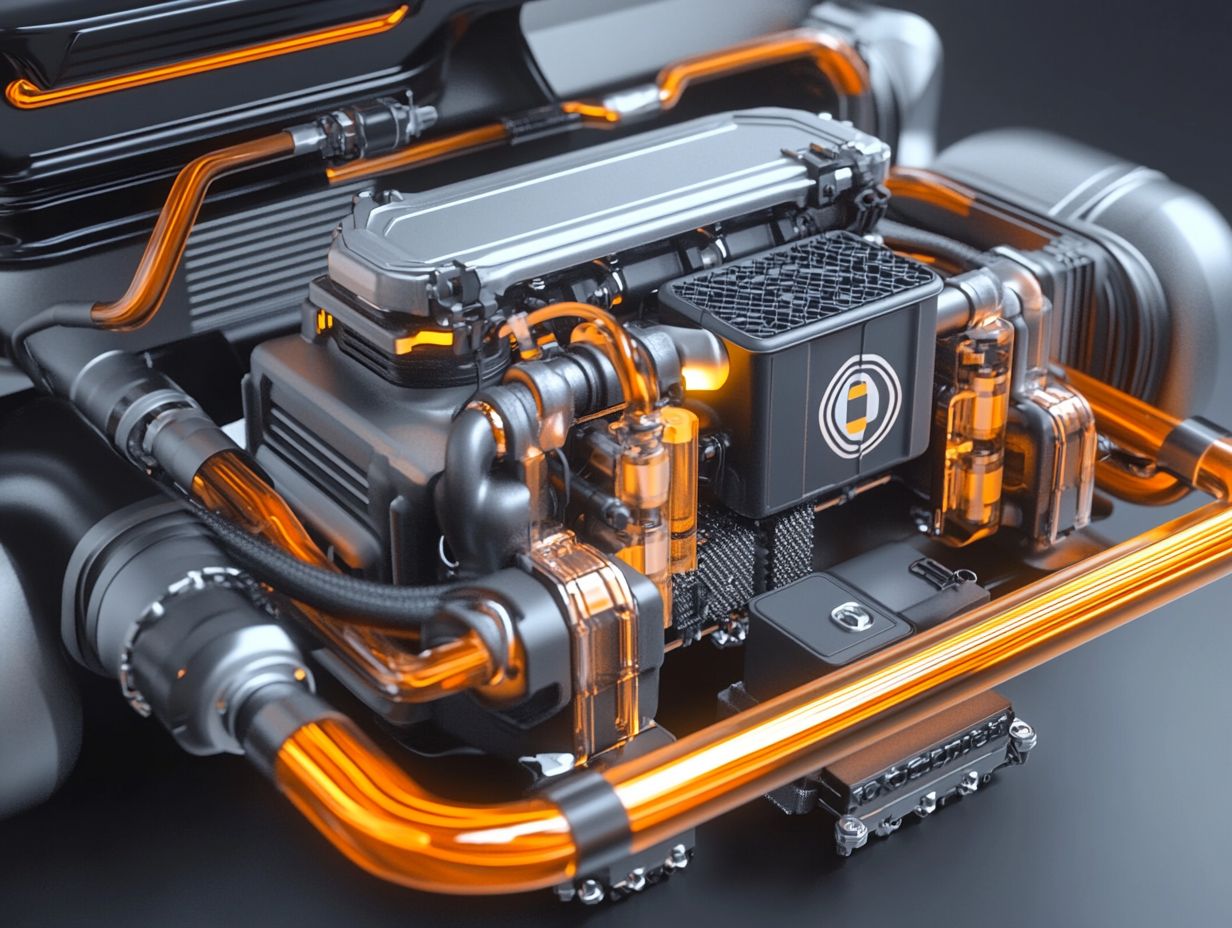
Common issues with EV cooling systems can profoundly affect both performance and safety. Regular maintenance is essential for electric vehicle owners.
Prioritizing this upkeep ensures that your vehicle operates optimally, protecting your vehicle and enhancing your driving experience.
Identifying and Addressing Problems
Identifying and addressing problems in your EV’s cooling system is essential for maintaining optimal performance and prolonging battery lifespan.
Look out for common signs that suggest a cooling system issue, such as overheating. This may show up as warning lights on your dashboard or unusual noises like hissing or bubbling from the coolant. If you notice these symptoms, it s crucial to take immediate action. Start by checking your coolant levels to ensure they align with the manufacturer s specifications.
It s equally important to inspect for leaks around hoses and connections. If you continue to hear strange sounds or experience persistent overheating, consulting a certified technician who specializes in electric vehicle systems is wise. They can provide a thorough diagnosis and necessary repairs, helping to safeguard both your vehicle’s performance and the integrity of its battery.
Future Developments in EV Cooling Technology
Exciting developments in EV cooling technology are on the way for you! These advancements are designed to enhance efficiency, performance, and battery safety. As these innovations unfold, you’ll benefit from a more reliable and effective driving experience, ensuring that your electric vehicle performs at its best while prioritizing safety.
Advancements and Potential Improvements
Recent breakthroughs in cooling technology will take your electric vehicle experience to the next level! Innovations like phase-change materials (substances that absorb or release heat during a phase change) and advanced thermal management systems are now being seamlessly integrated into vehicle designs. These cutting-edge materials excel at absorbing and dissipating heat, helping to maintain optimal operating temperatures for your vehicle.
The introduction of microchannel cooling techniques takes heat exchange efficiency to the next level. By effectively managing heat, these advancements not only boost battery performance during high-demand situations such as rapid acceleration and steep inclines but also significantly prolong the battery’s overall lifespan.
As a result, you can look forward to fewer charge cycles and a more sustainable, enjoyable driving experience.
Frequently Asked Questions
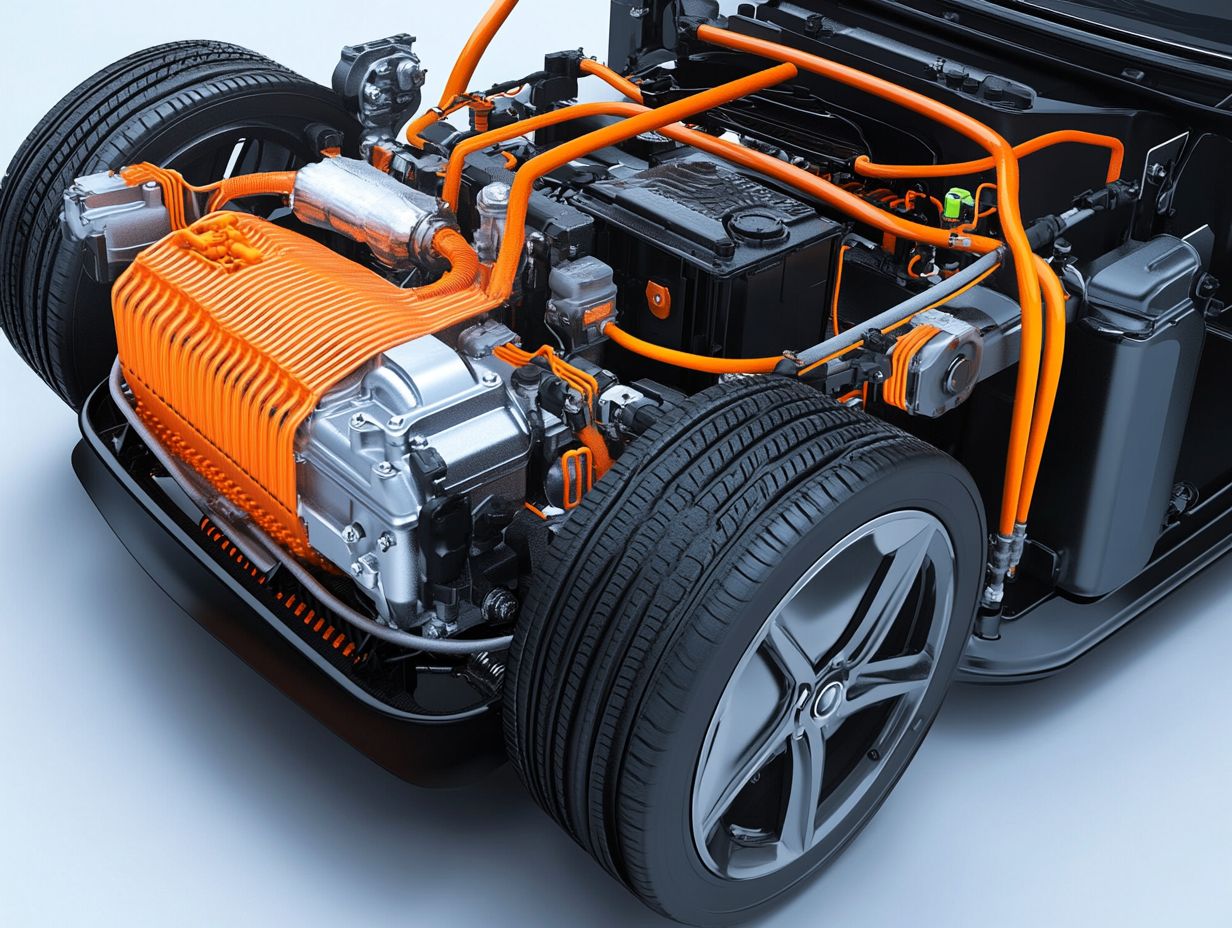
What is an EV cooling system?
An EV cooling system regulates the temperature of an electric vehicle’s battery, motor, and key components. This ensures optimal performance and longevity.
Why do electric vehicles need cooling systems?
Electric vehicles generate significant heat, especially during charging and heavy use. A cooling system prevents overheating and protects the vehicle’s components.
How does an EV cooling system work?
An EV cooling system uses a special fluid, called coolant, and a radiator to dissipate heat. The coolant circulates through tubes, absorbing heat and carrying it to the radiator for cooling.
What types of cooling systems are used in EVs?
The most common cooling system in EVs is liquid cooling. Some EVs also use air cooling or a combination of both methods.
Are there maintenance requirements for EV cooling systems?
Like traditional vehicles, EVs with liquid cooling systems need occasional coolant top-offs and replacements. Keep your EV running smoothly by following the manufacturer’s maintenance schedule!
Can EV cooling systems affect the range of an electric vehicle?
Yes! If the cooling system malfunctions and the battery or motor overheats, it can hurt the vehicle’s performance and reduce its range. Stay on top of your cooling system to ensure maximum efficiency!


